Impuestos Internos Sobre Naipes
Duty was first introduced on playing cards in Argentina in 1892, as part of the Internal Duties law, and in 1896 the first duty labels were printed to be used on packets of 1 gross packs.
TAX - IMPUESTOS INTERNOS sobre NAIPES
In 1816 imported, foreign playing cards were taxed at 30 reales per dozen packs. As a precaution, locally produced packs were stamped on the two of swords, and imported ones on the two of coins. On June 27, 1842 tax was imposed on playing cards by General Antonio López de Santa Anna. The treasury would control the manufacture and sale of playing cards through the tobacconists. Auditable accounts were required.
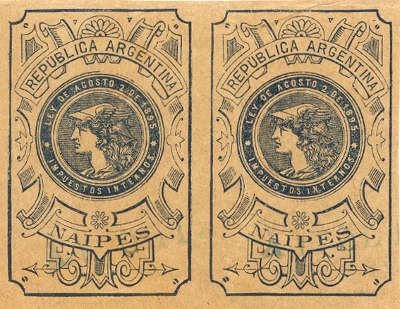
In 1892 the Internal Duties law was passed (no.2856) introducing the use of a tax stamp to be affixed around each gross of playing cards. The example shown (left) refers to a law of 2nd August 1895. In 1899 these were replaced by bands, initially for a dozen packs and then for single packs. There were several laws and decrees enacted which varied the details of the tax bands and stamps over the years.
The 'Boletín Oficial' dated 26th January 1899 (Official Government Bulletin) states that the inland revenue tax bands on playing cards shall be black for home-produced packs, and red for imported packs. It appears that the colour of these tax bands varied in the course of time, as well as the colour of the tax stamps themselves (below). Furthermore, the bulletin also states that the manufacturer must print his name and address on each outer wrapper, and also submit the four of cups (in Spanish-suited packs) or the ace of hearts (in Anglo-American style decks) for a control stamp to be applied, and that this card, once stamped, must be left outside the wrapper for inspection. Similar regulations governed the supplies of cardboard which also were officially controlled. Offenders were fined.
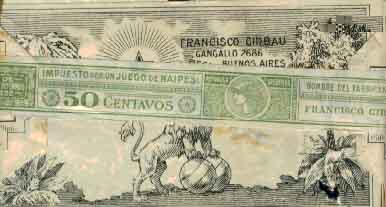
Left: green tax band (50 centavos) on outer wrapper of a standard pack made by Francisco Girbau, Buenos Aires, c.1925. "Ley de Impuestos Internos No.11252" of 1923. There was also a family of Girbaus manufacturing playing cards in Igualada (Spain) during the 1880s. The trade mark of a lion standing on two hemispheres beneath a radiant sun was used by several Spanish manufacturers of this time, referring to Spain and Hispano-American colonisation. (Image courtesy of Jose Luiz G Pagliari.)
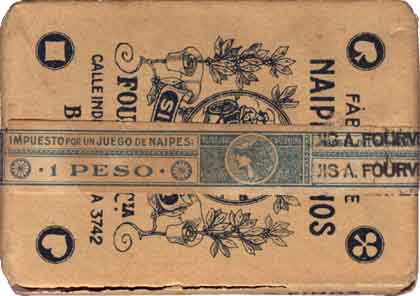
Left: blue tax band (one peso) on outer wrapper of a standard 'Side-Car' pack made by Luis A. Fourvel & Cia., Buenos Aires, c.1945. The manufacturer was also required to print his name and address on the tax band, as shown here. The tax band refers to "Decreto No. 18,235" which was used between 1944-64.

Above: a 50 centavos green tax band from a pack imported from Spain c.1930, referring to "Ley de Impuestos Internos No. 11,252" which was used between 1924-43. The box at the right-hand end contains the name of the importing agent: Casa Bertrand Domec de F. Fernández y J. Fagoaga.

Above: a rare 50 centavos blue tax band from a pack manufactured in Buenos Aires for Apeles S.A., referring to "Decreto No. 18,235" which was used between 1944-64. The box at the right-hand end contains a stamp which reads: C. A. 14 which must have been the code for the manufacturer.

Above: tax band from a pack manufactured in Buenos Aires by Igor L. M. Domicelj, referring to "Decreto No. 18,235" which was used between 1944-64.

Above: tax band from pack manufactured by Justo Rodero e Hijos S.R.L. in around 1950, also referring to "Decreto No. 18,235" which was used between 1944-64, although the image of Mercury has been changed to Marianne.

Above: tax band from a pack manufactured in Buenos Aires by Cappellano S.A. c.1960, referring to "Decreto No. 18,235" which was used between 1944-64.

Above: tax band from a pack manufactured in Buenos Aires by Paisanito S.R.L. c.1953, referring to "Decreto No. 18,235" which was used between 1944-64. The amount of tax can be 50 centavos or 1 peso.

Above: 1 Peso blue tax band, normally used on imported decks, but occasionally used on home-manufactured ones, as in this case from a pack manufactured in Buenos Aires by Orestes A. Cappellano, c.1944, referring to "Decreto No. 18,235" which was used between 1944-64.

Above: tax band from a pack manufactured in Buenos Aires by Paisanito S.R.L. c.1953, referring to "Decreto No. 18,235" which was used between 1944-64. The amount of tax can be 50 centavos or 1 peso.

Above: 2 peso yellow tax band from an imported pack, referring to "Decreto 18,235" used between 1944-64.

Above: tax band from an imported pack, referring to "Ley No. 16,656/64" used between 1965-7. The amount of tax can be 5 or 10 pesos.

Above: tax band from a pack manufactured in Buenos Aires by Carlos della Penna, referring to "Ley No. 16,656/64" (1965-7). The amount of tax can be 5 or 10 pesos.

Above: tax band from a children's card game manufactured in Buenos Aires by Juegos Victoria, referring to "Ley No. 17,196" (used between 1965-7). The amount of tax can be 10, 20 or 40 pesos.


Above: 3½ Peso tax bands for 12 imported packs, c.1900-1915.

Click image to see more
The tax stamp was printed onto the four of cups for Spanish-suited packs, or the ace of hearts for Anglo-american decks. The earliest examples appear after 1892, in black. A pale brown version was used on imported cards. There are at least three versions of the "Mercury" stamp, with slight differences in the engraving or lettering. The last type ("Marianne") appeared in 1953. Tax on playing cards was abolished in 1968.
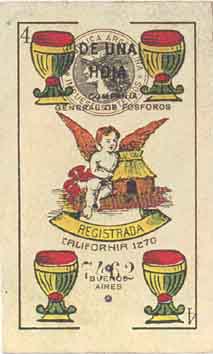
Black tax stamp on a pack made by Compañia General de Fosforos, Buenos Aires in c.1915. (Image courtesy Enrique García Martín).
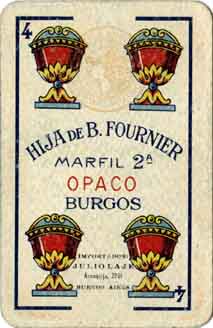
Pale brown 'import' tax stamp on a pack made by Hija de B. Fournier, Burgos (Spain) in c.1930 for export to Argentina. The name of the Argentinean importer, Julio Laje, Buenos Aires can be read at the bottom of the card. (The five of swords has the normal Spanish 'Exportación' tax stamp on it).
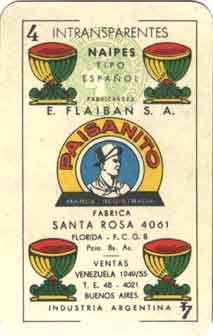
Green domestic production tax stamp on a 'Paisanito' Spanish-suited pack manufactured by E. Flaiban, Buenos Aires, c.1955.
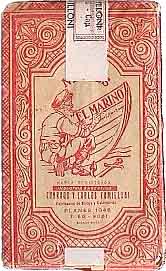
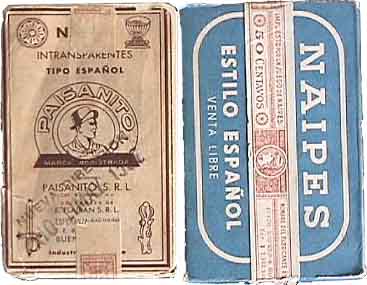
Above: three packs in wrappers with tax bands. (Images courtesy Andrea Pollett.)

By Simon Wintle
Member since February 01, 1996
Founder and editor of the World of Playing Cards since 1996. He is a former committee member of the IPCS and was graphics editor of The Playing-Card journal for many years. He has lived at various times in Chile, England and Wales and is currently living in Extremadura, Spain. Simon's first limited edition pack of playing cards was a replica of a seventeenth century traditional English pack, which he produced from woodblocks and stencils.
Trending Articles
Popular articles from the past 28 days
Related Articles
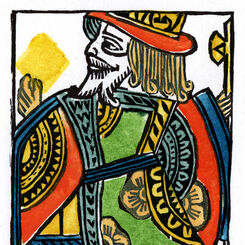
Woodblock and Stencil King of Diamonds
A limited edition art print of the King of Diamonds 1984 woodblock joker.
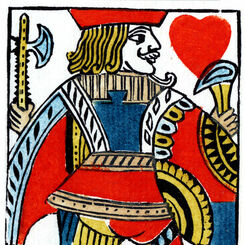
Woodblock and Stencil Jack of Hearts
A limited edition art print of the Jack of Hearts 1984 woodblock joker.
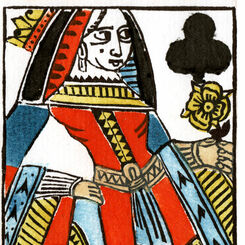
Woodblock and Stencil Queen of Clubs
A limited edition art print of the Queen of Clubs 1984 woodblock joker.
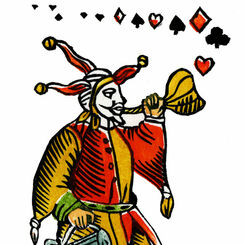
Woodblock and Stencil Joker
A limited edition art print of the 1984 woodblock joker.
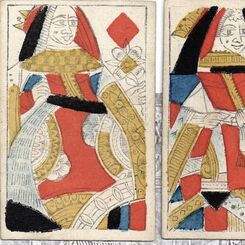
73: Fakes, Forgeries and Tax Evasion
When there are official taxes to pay, people will find a way to avoid paying them - often illegally....
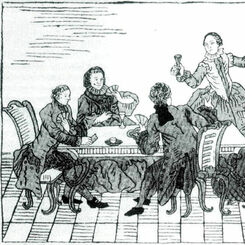
Russian Playing Card History - From the Beginnings to 1917
An in-depth review of the history of card-playing, gambling, legislation, manufacture and taxation o...
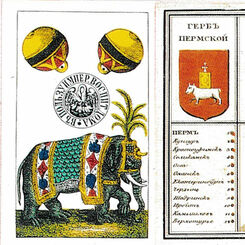
Russian Playing Card Monopoly
The Russian Playing Card Monopoly was established in March 1798 with all revenue going to support th...
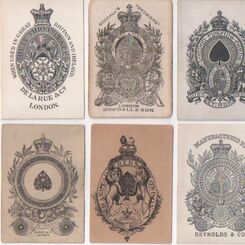
72: The Ace of Spades
In standard English packs the Ace of Spades is associated with decorative designs. This is a histori...
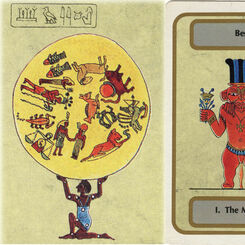
Egyptian Tarot
Egyptian Tarot inspired by ancient Egyptian art, mythology, and iconography, published by Naipes La ...
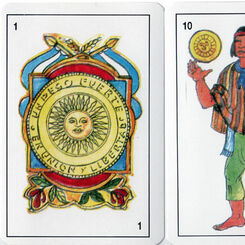
Naipes Criollos
“Naipes Criollos” Gaucho playing cards, 1995.
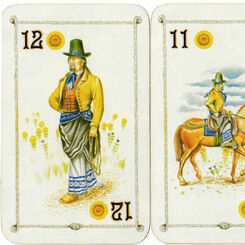
Naipes Cardón
Naipes Cardón designed by Mario Luis Rivero depicting traditional Argentine culture and identity, 20...
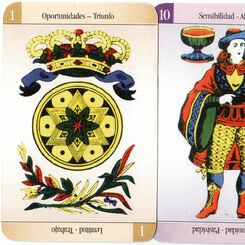
El Oráculo de la Bruja
“El Oráculo de la Bruja” fortune-telling cards, 2003.
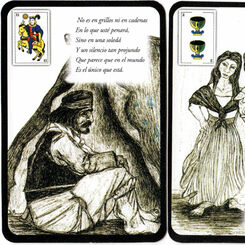
Martín Fierro
Naipes “Martín Fierro” based on the epic poem by José Hernandez.
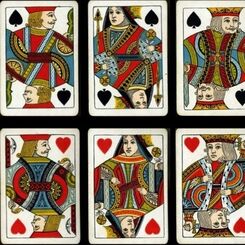
66: Adverts and related material 1862-1900
Some further material relating to cards from nineteenth and twentieth century periodicals.
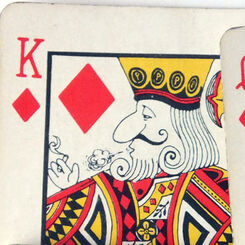
Naipes Parliament por Caloi
Carlos Loiseau, better known as ‘Caloi’, was a cartoonist whose designs for Parliament Cigarettes we...
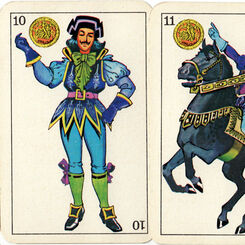
Minifusor Tipo Español
Naipes "Minifusor" tipo Español published by Difusora S.A., c.1980.
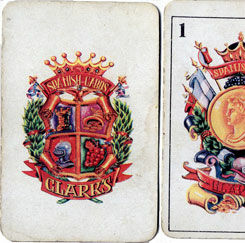
Clark’s Industries
Clark’s Industries Spanish Cards, c.1975.
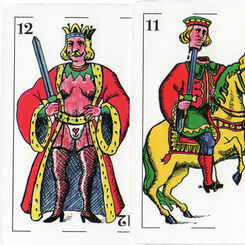
El Tripero
Hand-drawn semi-erotic, satirical playing cards by Lautaro Fiszman ‘El Tripero’, 2002.
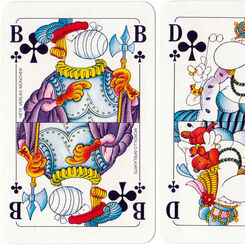
Mordillo Skat
Mordillo Skat designed by Guillermo Mordillo, c.1979
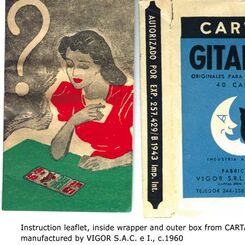
Cartas Gitanas
The designs of these fortune-telling cards are largely taken from nineteenth century Austrian "Rural...
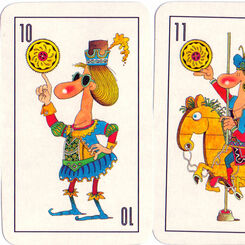
Naipes Garaycochea
Humorous playing cards designed by Carlos Garaycochea, Buenos Aires, c.2002.
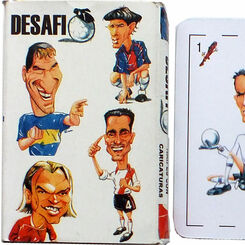
Desafio Football Caricatures
“Desafio” playing cards with football player caricatures, c.2000
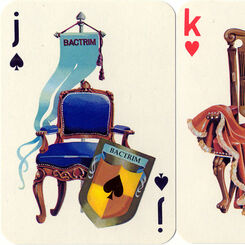
Roche Playing Cards
Roche Pharmaceutical playing cards, 1980s.
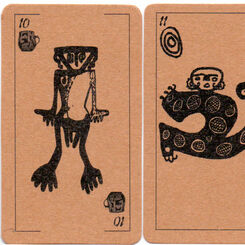
Cartas Precolombinas
Spanish playing cards with Pre-Columbian designs from Argentina, 2001.
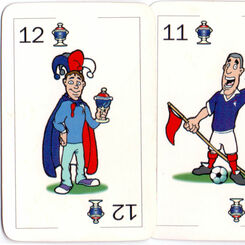
World Cup ’98
World Cup ’98 football team pack for Paradigma Consulting Group, 2000.
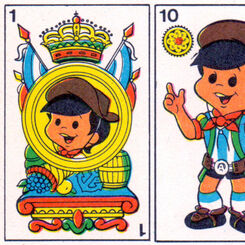
Mundialito de Radiolandia 2000
‘Mundialito’ toy football playing cards published inside the magazine ‘Radiolandia 2000’, Argentina,...
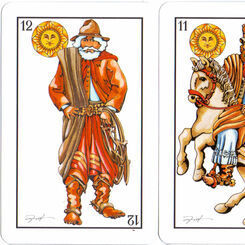
Baraja Gaucha
“Baraja Gaucha” fantasy deck designed by Mateo Tikas Plechas for Argentina, 1998.
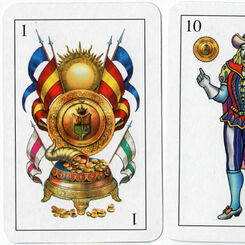
La Baraja
Anonymous “La Baraja” Spanish deck, c.2005.
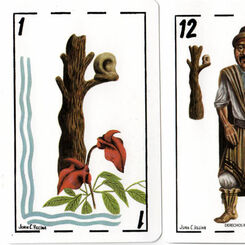
Baraja Gaucha Juan C. Yelina
Baraja Gaucha by Juan C. Yelina for Profertil S.A., 2006.
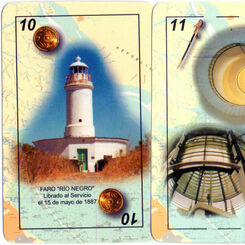
Servicio de Hidrografía Naval
125th anniversary of the Argentine Naval Hydrographic Service, 2004.
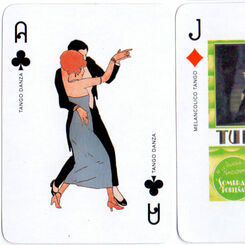
Milonguita
Naipes de Poker “Milonguita” featuring early Tango music score covers, Gardés Editorial, 2003.
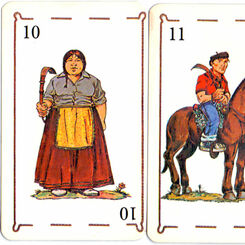
Gaucho Naipes
‘Gaucho’ Spanish-suited deck, anonymous manufacturer, made in Argentina, 2001.
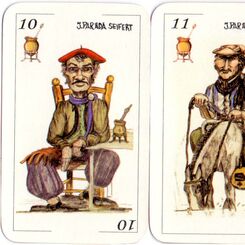
Naipe Criollo Caraí Pujol
‘Naipe Criollo Caraí Pujol’ with Gaucho designs by Julio F. Parada Seifert capturing the spirit of A...
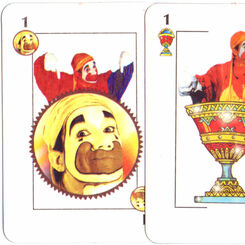
Piñón Fijo
“Piñón Fijo” is an Argentine clown, whose real name is Fabián Gómez. He is well-known on Argentine c...
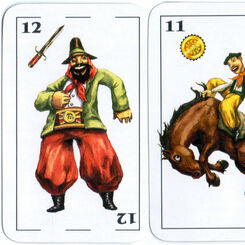
El Rodeo Talabartería
Promotional playing cards produced for ‘El Rodeo Talabartería’ specialising in leather goods and clo...
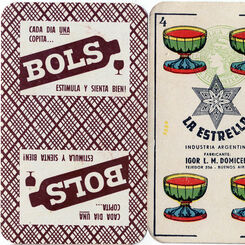
Naipes “La Estrella” for BOLS by Igor Domicelj, Bs Aires, c.1954
Naipes “La Estrella” Spanish-suited playing cards made for BOLS gin by Igor Domicelj, Buenos Aires, ...
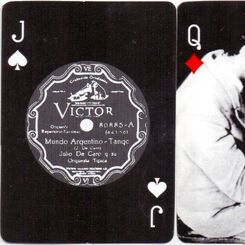
Black Tango
‘Black Tango’ playing cards with photographs of dancing couples published by Gardés Editorial, 2003....
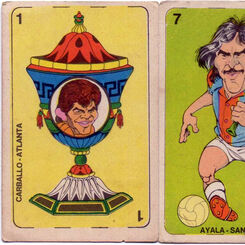
Barajitas Futbolísticas Golazo, 1973
Figuritas Golazo collectible football cards from Argentina, 1973.
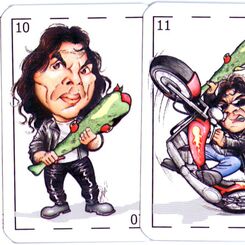
Truco “Únicos”
Naipes Truco “Únicos” with caricatures of national celebrities designed by Gerardo N. Perez, 2006.
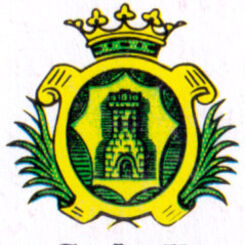
Gráfica S.A., Bs Aires
Gráfica S.A. of Buenos Aires has produced a number of brands using the Catalan pattern.
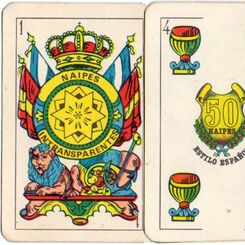
Naipes Españoles “El Mexicano”
Standard Catalan-type deck, titled "El Mexicano", by an anonymous Argentinean manufacturer, c.1980s....
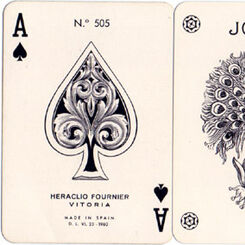
Poker Nº 505
Heraclio Fournier ‘Poker Nº 505’ for export to Argentina with elaborate peacock joker, c.1960.
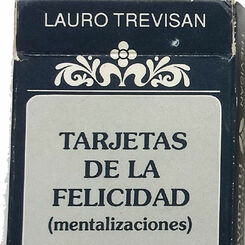
Tarjetas de la Felicidad
“Tarjetas de la Felicidad” containing positive mental affirmations by Lauro Trevisan, Buenos Aires (...
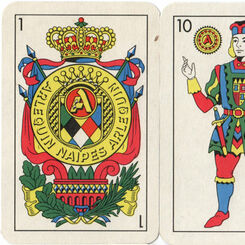
Arlequin
Naipes Arlequin come in both International and Spanish versions.


